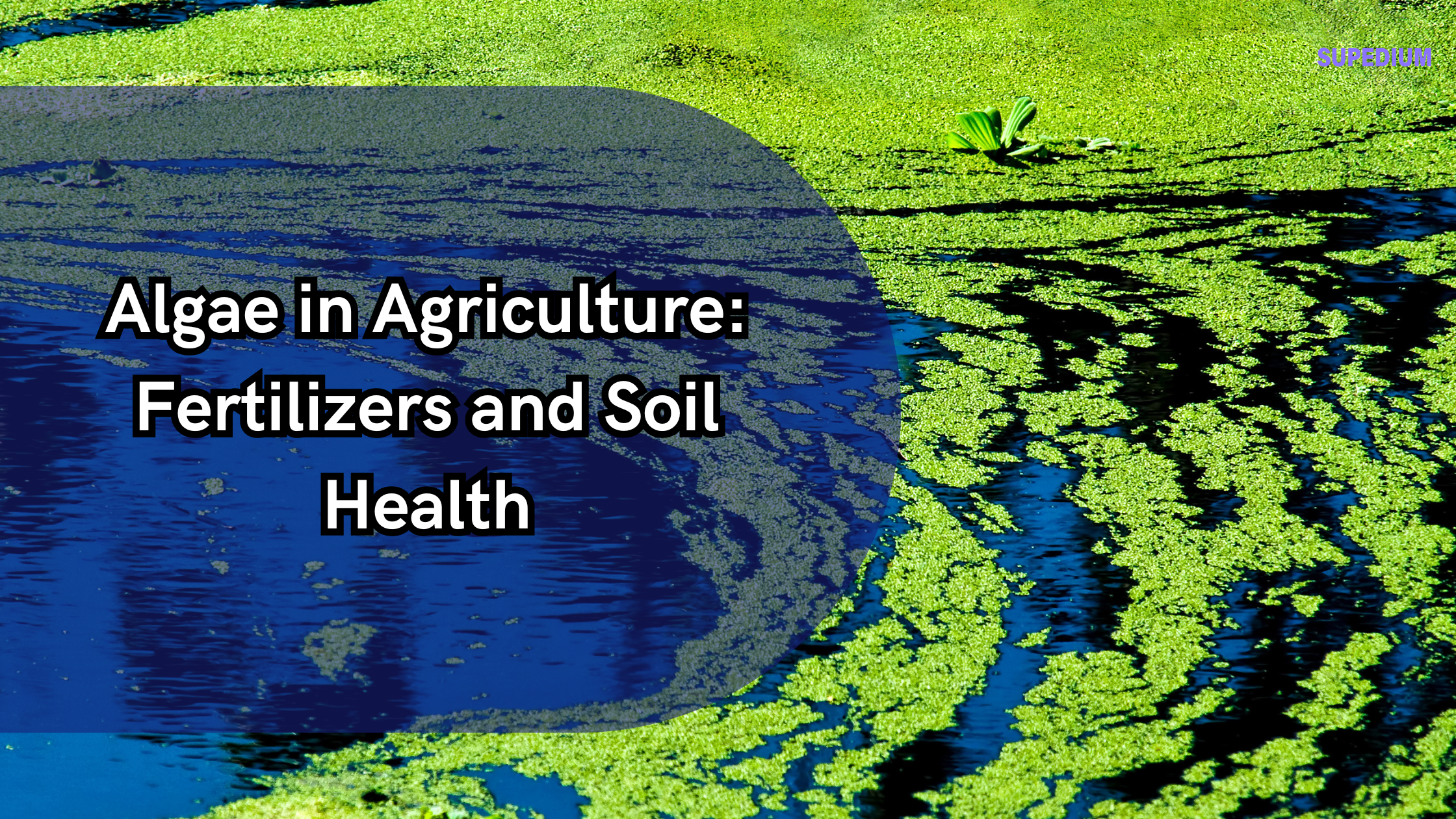Table of Contents
![]()
I. Introduction
Algae are diverse aquatic organisms capable of photosynthesis, ranging from microscopic microalgae to large macroalgae. These organisms have long been recognized for their ecological roles in aquatic environments, but their potential applications in agriculture are gaining increasing attention. This article explores the use of algae as fertilizers and their impact on soil health, highlighting their benefits, applications, and sustainability considerations.
II. Types of Algae Used in Agriculture
A. Microalgae
Microalgae are microscopic plants that can be found in both freshwater and marine environments. Notable examples include Chlorella, Spirulina, and Nannochloropsis. These organisms are rich in essential nutrients, including proteins, vitamins, and minerals. Their high nutrient density makes them valuable in agricultural applications.
- Chlorella: Known for its high protein content and rich array of vitamins and minerals, Chlorella is often used in organic fertilizers to boost soil fertility.
- Spirulina: Another protein-rich microalga, Spirulina is valued for its ability to enhance plant growth through its high levels of bioavailable nutrients.
- Nannochloropsis: This microalga is particularly noted for its essential fatty acids and can improve soil health and plant resistance to stress.
B. Macroalgae
Macroalgae, or seaweeds, are larger algae found in marine environments. Common examples include kelp and various types of seaweed such as Ascophyllum and Laminaria. These algae are rich in nutrients and growth-promoting substances.
- Kelp: Kelp is well-known for its high content of potassium, calcium, and trace minerals, which are beneficial for plant growth. It also contains alginates that help improve soil structure.
- Seaweed (Ascophyllum and Laminaria): These seaweeds provide a range of nutrients and growth hormones that stimulate plant development and enhance soil health.
III. Algae as Fertilizers
A. Nutrient Content
Algae-based fertilizers are valued for their rich nutrient profiles. They typically contain a mix of primary nutrients such as nitrogen (N), phosphorus (P), and potassium (K), along with secondary nutrients and micronutrients essential for plant health.
- Primary Nutrients: Algae fertilizers supply nitrogen, phosphorus, and potassium, which are crucial for plant growth and development.
- Secondary Nutrients and Micronutrients: Algae also provide calcium, magnesium, sulfur, and trace elements like iron, manganese, and zinc.
B. Mechanisms of Action
Algae-based fertilizers work through several mechanisms to enhance plant growth and soil health:
- Nutrient Release and Uptake: Algae release nutrients in forms that are readily absorbed by plants, promoting robust growth and development.
- Soil Conditioning: Algae-based fertilizers improve soil structure by increasing soil aggregation and porosity, which enhances root penetration and water infiltration.
C. Benefits of Algae-Based Fertilizers
- Enhanced Nutrient Availability: Algae fertilizers offer a balanced nutrient profile that improves nutrient availability and uptake by plants.
- Improved Soil Moisture Retention: Algal substances help soil retain moisture, reducing the need for frequent irrigation.
- Reduced Need for Synthetic Fertilizers: Algae fertilizers can reduce reliance on chemical fertilizers, contributing to more sustainable agricultural practices.
D. Types of Algae-Based Fertilizers
- Liquid Fertilizers: Algae extracts are processed into liquid form, making them easy to apply via foliar spraying or irrigation systems.
- Granular Fertilizers: Algae are processed into granules that can be directly applied to the soil.
- Compost and Organic Matter: Algae can be incorporated into compost or used as organic matter to enrich the soil.
IV. Algae and Soil Health
A. Soil Structure and Composition
Algae contribute significantly to soil health by enhancing soil structure and composition:
- Soil Aggregation: Algal substances improve soil aggregation, leading to better soil structure and reduced erosion.
- Soil Porosity and Aeration: The incorporation of algae increases soil porosity and aeration, facilitating root growth and reducing compaction.
B. Microbial Activity
Algae positively impact soil microbial activity:
- Beneficial Soil Microorganisms: Algae-based fertilizers stimulate the growth of beneficial soil microorganisms, which help decompose organic matter and enhance nutrient availability.
- Soil Microbial Diversity: Algae support a diverse microbial community, contributing to a balanced and healthy soil ecosystem.
C. Soil Fertility
Algae enhance soil fertility in several ways:
- Soil Organic Matter: Algae contribute to the accumulation of organic matter in the soil, improving its fertility and structure.
- Soil pH and Nutrient Balance: Algae-based fertilizers can help balance soil pH and provide a steady supply of essential nutrients.
V. Practical Applications and Use Cases
A. Case Studies
Several agricultural operations have successfully integrated algae-based fertilizers:
- Case Study 1: A farm in California reported improved crop yields and soil health after using kelp-based fertilizers. The farm observed enhanced growth rates and reduced need for synthetic fertilizers.
- Case Study 2: A research study in Europe demonstrated that microalgae-based fertilizers increased soil microbial activity and plant resistance to stress.
B. Application Methods
Algae-based fertilizers can be applied using various methods:
- Direct Application to Soil: Granular and composted algae products can be spread directly on the soil.
- Foliar Spraying: Liquid algae fertilizers can be sprayed on plant leaves to provide nutrients directly.
- Integration with Other Soil Amendments: Algae-based fertilizers can be used in combination with other soil amendments to optimize soil health and fertility.
C. Cost-Effectiveness and Accessibility
- Economic Considerations: While algae-based fertilizers may initially be more expensive than synthetic options, their benefits in improving soil health and reducing the need for additional inputs can make them cost-effective in the long term.
- Availability and Sourcing: Algae products are increasingly available through specialized suppliers and can be sourced from both local and international markets.
VI. Environmental and Sustainability Considerations
A. Impact on Ecosystems
Algae-based fertilizers offer several environmental benefits:
- Reduced Synthetic Fertilizer Use: Using algae-based fertilizers decreases reliance on synthetic fertilizers, reducing the risk of soil and water pollution.
- Sustainable Practices: Algae cultivation can be done in a sustainable manner, often utilizing waste products or non-arable land.
However, potential risks include:
- Ecosystem Disruption: Large-scale algae cultivation must be managed carefully to avoid disrupting local aquatic ecosystems.
- Resource Use: The production of algae-based fertilizers requires resources such as water and energy, which should be managed sustainably.
B. Algae Cultivation and Harvesting
Sustainable algae cultivation practices are essential for minimizing environmental impact:
- Farming Practices: Efficient and responsible algae farming practices include using renewable energy sources and minimizing water usage.
- Harvesting Techniques: Innovations in harvesting techniques can reduce environmental impact and improve the efficiency of algae production.
VII. Future Directions and Research
A. Innovations in Algae Fertilizer Technologies
Research and development are driving innovations in algae-based fertilizers:
- Advances in Cultivation: New methods for algae cultivation aim to improve yield and efficiency.
- Development of New Strains: Research is focused on developing algae strains with enhanced nutrient profiles and growth-promoting properties.
B. Integration with Other Sustainable Agricultural Practices
Algae-based fertilizers are increasingly being integrated with other sustainable practices:
- Combined Use: Algae-based fertilizers can be used alongside cover crops, reduced tillage, and other sustainable practices to optimize agricultural systems.
C. Policy and Market Trends
Policy and market trends are shaping the future of algae-based fertilizers:
- Government Incentives: Supportive policies and incentives can promote the adoption of algae-based fertilizers.
- Market Potential: The growing demand for sustainable agricultural solutions is driving the expansion of the algae fertilizer market.
VIII. Conclusion
Algae-based fertilizers represent a promising alternative to synthetic fertilizers, offering numerous benefits for both soil health and plant growth. Their rich nutrient profiles and positive impacts on soil structure and microbial activity make them a valuable tool in sustainable agriculture. As research continues and innovations emerge, algae-based fertilizers are likely to play an increasingly important role in advancing agricultural sustainability.
Share This





Be the first to comment